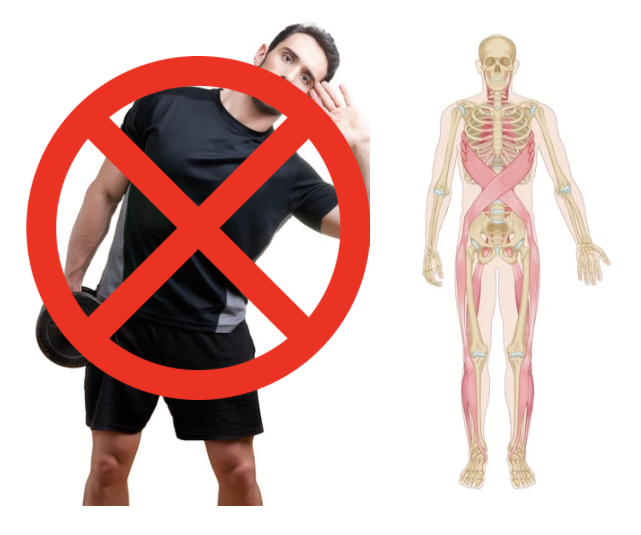Why Side Bends Aren’t Effective for the Obliques
2024-10-20
I have to be honest, I’m not surprised that in 2025 we still see people doing side bend exercises at the gym. In fact, part of me expects it because I’ve noticed the fitness industry going backward in the last five years or so. But here’s what really surprises me, we have so much information about how our bodies work, yet many physical therapist, strength coaches, fitness pros, and chiropractors still rely on outdated exercises like side bends. It’s time to talk about why side bends are a terrible exercise for your core, especially when it comes to training the obliques.
Why Side Bends Aren’t Effective for the Obliques
One of the biggest misconceptions about core training is that the obliques are best worked by side bending. Yes, the obliques can help us bend sideways, but that’s not their primary function. If side bending was their main job, we’d see the oblique muscles running vertically, like the biceps or quadriceps, which are designed for powerful movements in one direction. But the obliques don’t run up and down—they run diagonally, and there’s a reason for that.
The obliques are designed to do something far more complex than lateral bending. Their main role is to stabilize the core and act as a communication system between the upper and lower body. Think of them like a corset or back brace, helping to control and resist unnecessary movement. This is what allows us to move efficiently and with control.

The Science Behind Oblique Function
Research supports this understanding of the obliques. A study titled “Feedforward Muscle Activity: An Investigation Into the Onset and Activity of Internal Obliques During Two Functional Reaching Tasks” found that the internal obliques engage before movements like reaching to provide core stability. In other words, the obliques help stabilize the spine so your arms and legs can move safely and efficiently. They’re designed to control movement, not create it.
View this post on Instagram
Another study published in the International Journal of Physical Therapy explains how core muscles, including the obliques, are critical for generating power in movements like throwing or striking. More than half of the force in a tennis serve, for example, comes from the trunk and lower body—not just the arms. Weak core muscles or poor hip mobility can throw off this balance and lead to injury. So, the obliques are key in stabilizing the body during complex, multi-joint movements.
The Problem with Side Bends
Now, let’s address the confusion around side bends. Yes, we move laterally in everyday life, but that doesn’t mean side bends are the best way to train for it. The quadratus lumborum (QL), a muscle often associated with lateral movement, provides minimal force when compared to the larger muscles of the back. The QL can assist with side bending, but it’s not designed to do so with much power. This is important because when we engage in side bends, we’re relying on a muscle that isn’t particularly strong or efficient for this movement.
More importantly, side bends ignore the real purpose of the lateral chain in your body—to resist lateral movement. When you force your body into side bends, you’re not building strength, you’re creating energy leaks. This means you’re actually weakening your stability and reducing your overall strength potential. The body is designed to use the obliques and surrounding muscles to create a solid foundation, allowing for powerful movements in other directions. By performing side bends, you disrupt that foundation and limit your potential.
View this post on Instagram
As physical therapist, Jessica Bento shows, stretching laterally and strengthening the obliques can look like two different training goals.
The Power of Proximal Stability
If you want to improve core strength, mobility, and performance, you need to focus on proximal stability. This concept refers to stabilizing the core so that your arms and legs (the distal parts of your body) can move more effectively. As explained in the Journal of Strength and Conditioning, “Proximal stiffness enhances distal mobility and athleticism.” By creating a strong, stable core, you unlock greater power and coordination in the rest of your body. This is crucial for movements like sprinting, throwing, kicking, or even everyday tasks like carrying groceries.
The “serape effect,” which describes the spiral pattern of the core muscles, plays a huge role in this. These muscles work together to create rotational stability, which allows for faster and more powerful limb movements. This is where the real strength of your obliques comes into play—not in side bending, but in stabilizing and controlling rotational movement.
View this post on Instagram
So, What Are Good Oblique Exercises?
Instead of wasting time on side bends, focus on exercises that challenge the core in the way it’s designed to function. Here are a few examples:
– Rotational exercises
– Anti-rotation exercises
-Loaded carries
– Plank variations
Train Smarter, Not Harder
Side bends aren’t just ineffective—they’re counterproductive. They weaken your body’s ability to stabilize itself, creating energy leaks and reducing your strength potential. Instead, focus on exercises that train the obliques to stabilize and control movement, the way they’re designed to. By understanding how your body works, you can train more effectively, avoid injury, and unlock your full potential. So, let’s leave side bends in the past and embrace smarter, more functional core training.
Learn more about how to pick smarter and more effective exercises for your workouts. Join us for a FREE Webinar about exercise prescription HERE June 3rd. No registration needed, just mark down the date and time.
© 2026 Ultimate Sandbag Training. Site by Jennifer Web Design.







